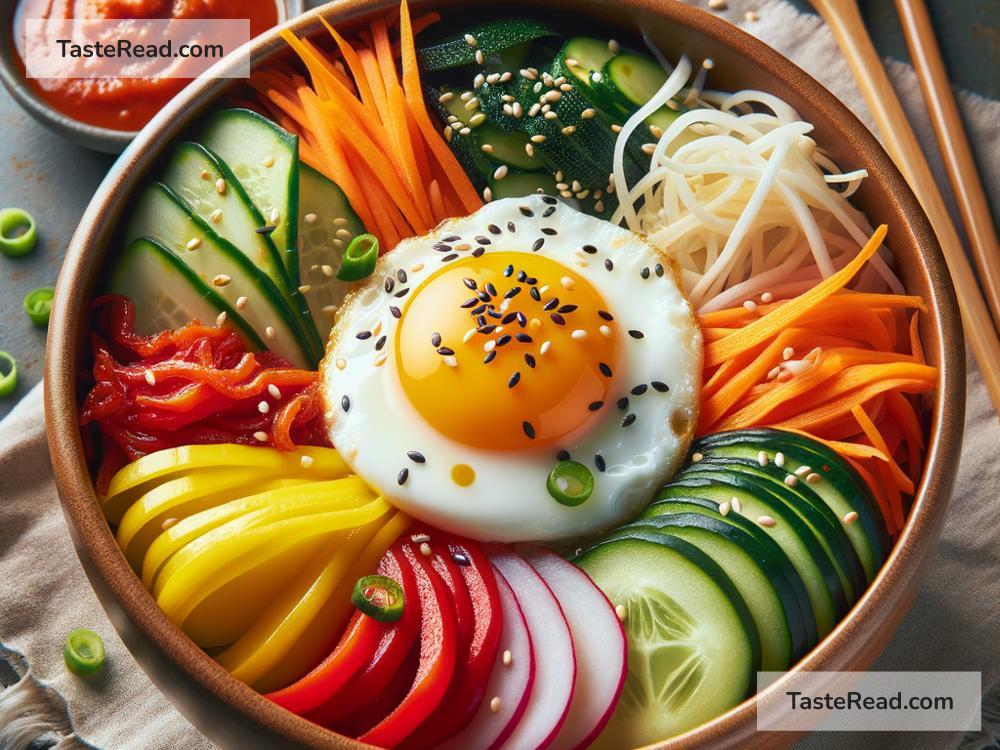Korean Bibimbap: The Ultimate Balance of Flavors and Textures
If you’ve ever dived into the colorful world of Korean cuisine, you’ve probably encountered Bibimbap. This simple, yet sophisticated dish is more than just a meal; it’s a harmonious blend of flavors and textures that captivates your taste buds. But what makes Bibimbap stand out in the vast sea of international cuisines? Let’s unravel the artistry behind this Korean staple and discover why Korean Bibimbap is the epitome of balance and harmony on a plate.
The Symphony of Ingredients
At its core, Bibimbap is a vibrant mix of rice, various vegetables, a protein source (commonly beef), a fried egg, and a dollop of spicy gochujang sauce. Each component is prepared separately and then artistically arranged over a bowl of warm, fluffy rice. But it’s not just the ingredients themselves that make Bibimbap special; it’s how their individual flavors and textures come together to create something truly magical.
The Dance of Flavors
One of the most enchanting aspects of Bibimbap is its complex flavor profile. It’s a dish that sings with the five major flavors: sweet, sour, salty, bitter, and umami. The sweetness comes from the vegetables and sometimes from the marinated beef. The sour note is subtly introduced with kimchi or pickled vegetables. Salty tones weave through the dish, courtesy of the soy sauce and seasoned vegetables. Bitterness is a quiet background note, often contributed by leafy greens. Then, there’s the umami – the deep, savory taste provided by the beef, mushrooms, and gochujang sauce. Together, these flavors dance in harmony, each step perfectly timed, creating a delightful experience with every spoonful.
The Texture Tango
Beyond its complex flavor profile, Bibimbap is a masterclass in contrasting textures. The dish offers a variety of textures that play off each other in the most delightful way. The crispness of fresh vegetables like carrots and cucumbers juxtaposes with the soft, creamy yolk of the fried egg. The chewy tenderness of the beef contrasts with the slight crunch of bean sprouts or spinach. And then there’s the warm, comforting base of steamy rice that ties it all together. This dynamic interplay of textures adds depth and interest, making every bite a surprise.
Nutritional Harmony
Not only is Bibimbap a feast for the senses, but it’s also incredibly balanced from a nutritional standpoint. It’s a well-rounded meal that incorporates all the major food groups – carbohydrates from the rice, proteins from the beef and egg, and a plethora of vitamins and minerals from the rainbow of vegetables. The gochujang sauce not only adds flavor but also packs a metabolic kick thanks to its main ingredient, red chili pepper. This balance makes Bibimbap not just delicious but also a wholesome meal that fuels the body with everything it needs.
Adaptability and Personalization
Another beautiful aspect of Bibimbap is its adaptability. It’s a dish that welcomes personalization, allowing individuals to adjust the flavors and ingredients to their liking. Not a fan of beef? Substitute it with chicken, tofu, or even seafood. Prefer a milder taste? Adjust the amount of gochujang sauce or skip the kimchi. The possibilities are endless, making Bibimbap a versatile dish that can cater to a wide range of dietary preferences and restrictions.
Conclusion
Korean Bibimbap is more than just a meal; it’s a culinary masterpiece that exemplifies the beauty of balance. Through a careful selection of ingredients and a mindful approach to flavors and textures, Bibimbap achieves harmony in a bowl. Its ability to marry diverse components into a cohesive, delicious, and nutritious dish is what makes it a favorite not only in Korea but around the world. Whether you’re a long-time fan or a curious newcomer, Bibimbap is a dish that promises a unique and satisfying dining experience, inviting you to savor the perfect balance of flavors and textures with every bite.


